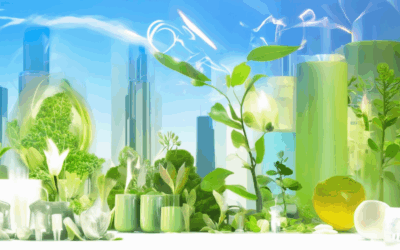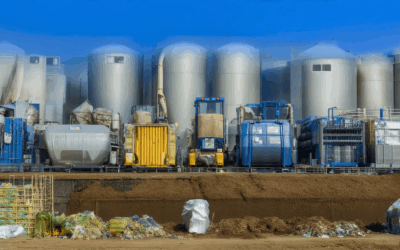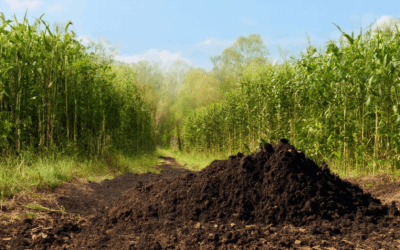The world is increasingly seeking sustainable solutions to pressing environmental challenges, and low-impact pyrolysis technology emerges as a promising alternative. This innovative approach offers a way to transform waste materials into valuable resources while minimizing environmental harm. By exploring the intricacies of pyrolysis, its applications, and the challenges it faces, this article aims to shed light on the potential of low-impact pyrolysis technology to play a pivotal role in our quest for a cleaner, greener future. From understanding why pyrolysis isn’t widely adopted to delving into its types and applications, this exploration will clarify the misconceptions surrounding pyrolysis and its role in solving some of today’s most pressing environmental dilemmas. Whether you’re curious about the pyrolysis process, its limitations, or its future prospects, this article provides a comprehensive overview designed to inform and inspire.

Why Pyrolysis Is Not Widely Used
Pyrolysis, a thermal decomposition process that converts organic materials into stable carbon-rich substances like biochar, is not widely adopted due to several factors:
- High Energy Requirements : Pyrolysis typically requires high temperatures (500-800°C) and controlled environments, leading to significant energy consumption. This makes it less appealing compared to other waste management methods that require lower energy input.
- Lack of Awareness and Education : Many stakeholders, including policymakers, industries, and the general public, are unaware of pyrolysis’s potential benefits. Limited access to educational resources and successful case studies hinders widespread adoption.
- Regulatory and Market Challenges : Pyrolysis may face regulatory barriers depending on the region, as it involves handling hazardous materials and producing byproducts that require specific disposal methods. Additionally, it competes with well-established technologies like incineration and composting, which have longer histories of use and established markets.
- Scalability Issues : While pyrolysis is effective for certain waste streams, scaling it to meet the needs of large industries remains a challenge. The process is often laboratory-scale, and transitioning to commercial-scale operations requires overcoming technical and economic barriers.
- Technological Limitations : Despite advancements, pyrolysis technology is still developing, and fully commercialized plants are rare. The complexity of the process and the need for specialized equipment further hinder its widespread implementation.
To address these challenges, fostering collaboration between researchers, industries, and governments could accelerate the adoption of pyrolysis. Promoting its benefits and overcoming technical and regulatory obstacles would be essential for broader usage.
What Are the Three Types of Pyrolysis?
Pyrolysis is a thermal decomposition process that breaks down materials into simpler substances through high-temperature heating in the absence of oxygen. Below are the three primary types of pyrolysis:
- Biomass Pyrolysis
- Plastic Pyrolysis
- Metal Pyrolysis
Biomass Pyrolysis
Biomass pyrolysis involves the breakdown of organic materials derived from plants, such as wood chips, agricultural residues, and forest waste. This process typically occurs at temperatures between 200°C and 500°C, producing a mixture of biochar, syngas, and carbon dioxide (CO2). Biochar, a carbon-rich material, is highly valued for its ability to sequester carbon and improve soil fertility.
Plastic Pyrolysis
Plastic pyrolysis focuses on the decomposition of synthetic polymers, such as polyethylene, polypropylene, and polystyrene. This process is particularly useful for recycling and reducing the environmental impact of plastic waste. Plastic pyrolysis typically operates at slightly higher temperatures than biomass pyrolysis, around 350°C to 450°C, and produces liquid hydrocarbons, which can be further refined into fuels or other chemicals.
Metal Pyrolysis
Metal pyrolysis is primarily used to process electronic waste (e-waste), such as circuit boards and discarded electronics. This method heats the materials at temperatures ranging from 600°C to 800°C, breaking down metals and plastics into reusable components like copper, aluminum, and rare earth elements. The resulting gases produced during this process can also be captured and utilized.
These three types of pyrolysis play crucial roles in waste management, energy production, and resource recovery, offering sustainable alternatives to traditional disposal methods. By understanding these processes, we can better appreciate their importance in promoting circular economies and reducing environmental degradation.

Downsides of Pyrolysis
While pyrolysis offers numerous benefits, it also presents several challenges and drawbacks:
- High Costs:** Pyrolysis facilities require significant investment in equipment and infrastructure, making the initial setup expensive. Maintenance and repair costs can also add to operational expenses.
- Energy Intensity:** The process requires substantial energy input, often relying on non-renewable sources, which can increase carbon emissions and strain energy grids.
- Environmental Concerns:** Emissions produced during pyrolysis, such as CO2, CH4, and N2O, contribute to greenhouse gas levels. Contaminants may also leach from biochar if not properly managed, potentially harming soil and water.
- Safety Risks:** High temperatures and pressurized systems pose significant safety hazards, including the risk of fires, explosions, and severe injuries if safety protocols are not followed.
- Scalability Issues:** While effective for large-scale applications, pyrolysis may be less feasible for smaller operations or remote areas due to infrastructure limitations.
- Public Perception and Trust:** Public skepticism towards new technologies, coupled with historical incidents involving similar processes, can hinder acceptance and implementation.

What is the Problem with Pyrolysis Oil?
Pyrolysis oil, also known as biochar or carbon black, is a product derived from the thermal decomposition of organic materials. While it offers several benefits, it does have some limitations and challenges associated with its production and application.
One of the primary issues with pyrolysis oil is its incompatibility with certain types of plastics. The process requires specific conditions, and not all plastics can be effectively converted into pyrolysis oil. This limits the range of materials that can be utilized, reducing the overall effectiveness of the process.
Another significant challenge is the relatively low yield of pyrolysis oil compared to other forms of energy or fuel. The conversion rates are not as high as those seen in traditional refining processes, meaning more material needs to be processed to produce a usable amount of pyrolysis oil. This can make it less efficient for large-scale applications.
Contamination is also a major concern. Pyrolysis oil can sometimes contain impurities or residues from the original materials being processed. These contaminants can affect the quality and usability of the final product, requiring it to be blended with a petroleum-based mixture. In some cases, the ratio of pyrolysis oil to petroleum-based components can exceed 40:1, further reducing its standalone value.
These factors highlight the need for careful selection of feedstocks, controlled processing conditions, and proper handling procedures to maximize the effectiveness and minimize the drawbacks of pyrolysis oil production.
Is Pyrolysis Just Burning?
Pyrolysis is not simply burning. While it involves the application of heat, it occurs in the absence of oxygen, distinguishing it from combustion. This process typically transforms materials into different substances, such as biochar or carbon black, rather than producing flames or heat typical of burning. Pyrolysis is utilized across various industries, including agriculture for enhancing soil fertility and energy production for generating syngas, which can be further refined into fuels or chemicals. Unlike combustion, pyrolysis focuses on breaking down materials without oxygen, making it a unique and essential process in many industrial applications. Link to learn more

Why Don’t We Turn Plastic Into Fuel?
Plastic waste is a significant global issue, and while converting it into fuel presents an intriguing solution, several factors hinder its widespread adoption. Here’s a breakdown of the key reasons:
- Energy Requirements : Breaking the strong carbon-carbon bonds in plastic demands high temperatures, making the process energy-intensive. This challenge is compounded by the fact that once these bonds are broken, the resulting molecules often reform into unwanted compounds, rendering them unsuitable as fuel.
- Contamination Issues : Plastics frequently contain additives like flame retardants and pigments, which can interfere with the pyrolysis process and contaminate the final product, reducing its effectiveness as fuel.
- Cost and Infrastructure : The high costs associated with the necessary equipment and the energy required for the process, coupled with the need for specialized infrastructure to collect and transport plastic waste, pose significant barriers to implementation.
- Environmental Concerns : While converting plastic into fuel can reduce landfill use and pollution, it raises concerns about potential emissions and safety issues, which could lead to new environmental problems.
- Market Viability : The economic feasibility of this approach is questionable due to the high costs involved and the limited market demand for recycled fuel compared to conventional fuels like oil and gas.
Despite these challenges, initiatives like those promoted by organizations such as Pyrolysium aim to address these issues through innovative technologies and sustainable practices, offering hope for a more circular economy. While the process is not yet mainstream, ongoing research and development continue to explore ways to overcome these limitations, paving the way for a more efficient and environmentally friendly solution.
Pyrolysium is at the forefront of this movement, utilizing pyrolysis to transform plastic waste into valuable resources like biochar, contributing to a more sustainable future.




0 Comments